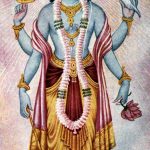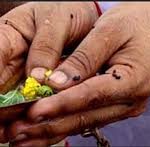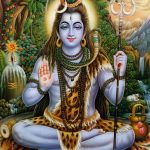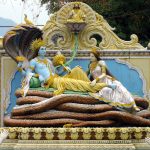Pausha is a unique month. It is considered both the most auspicious month and also inauspicious. Paush month occurs during December-January of the Gregorian Calendar. Many special festivals come in this month.
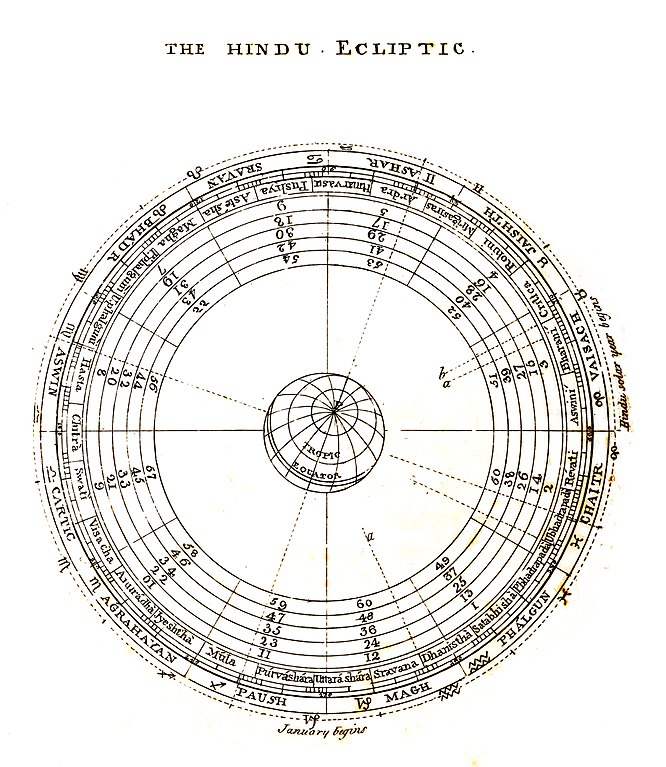
Paush Month Significance
Pausha is the tenth month in the Hindu Lunisolar Calendar. It coincides with Danur Masa of the Hindu Solar Calendar. This is also the Margashirsha month.
Hindu Calendar
In the Hindu Calendar, the cycles of the moon form the basis for time measures. However, it is a lunisolar calendar. So some periods like the days for some festivals are fixed according to the Solar cycles too.
The months, called masa, follow the lunar cycle. Each month covers two phases of the moon. So, a month is divided into two pakshas – the Krishna Paksha or the waning phase and Shukla Paksha or the bright waxing phase of the moon.
A year has twelve months, whether in the lunar or solar calendars. Hindu astronomy recognizes 27 nakshatras or constellations that lie along the sidereal orbit of the moon. Each lunar month takes the name of the Nakshatra against which the moon positions itself on that month’s Full Moon Day or Purnima. Consequently, Pausha or Pushya month takes the name of the Pushya Nakshatra.
The Dates
Paush month generally falls in the January to December period of the Gregorian Calendar. However, the lunar cycles shift, so the month beginning and end dates also keep shifting. Also, there are two Lunar Calendars prevalent in India. Purnimanta calendar commences on the Bright Phase and ends in the Bright Phase. The other, the Amanta calendar, begins and ends on the Dark Phase or the Krishna Paksha.

So, the month dates may not be uniform throughout the country, as most Northern states follow the Purnimant calendar, while the Peninsular states except Odisha follow the Amanta system. Even within this, there are variations. However, most festivals and special days occur on the same day in the Gregorian Calendar.
Paush Meaning and Paush Month Importance
Pushya means to nourish or nourishing So this is a good month. It is just not a month for performing auspicious material functions like grahapravesam or marriages. The Paush month is dedicated to spiritual practices. If you perform any puja, meditation, or prayers on this month, they are very effective. This is because this period marks the early hours of the morning or pre-dawn for the Devas. One earth year coincides with one day for them.
This is a cold-weather month, the Shishira season. It is a very pleasant season, as the weather cools down and gives relief from the mostly hot tropical climate of India. As it is the pre-dawn for the Celestials, they are very alert and quick to respond to prayers. Krishna in the Bhagavad Gita declares himself to be the Margashirsha month (Pausha or Dhanur month) among all the months.
Paush Month Significance and Spiritual Importance
As stated before, Pausha month is a very special month for religious and spiritual practices. Many stories and events illustrate the importance of this month. Pausha month is the tenth month of the Hindu Calendar, it comes in the December-January period.
Ratri Devi’s Prayer
Ratri Devi is the patron deity of nights. She is also the deity of Dakshinayan, the southward progress of the sun. Dakshinayana and night are generally considered inauspicious. Once, Ratri Devi meditated on Lord Vishnu. When He appeared, Ratri Devi asked him to grant relief from her infamy.
The Lord blessed her and assured her the months or seasons she ruled would now become auspicious. Pujas performed during this period will have special benefits. From then, the stigma attached to Dakshinayana began to fade. These months are now the periods of many festivals and celebrations in the Hindu calendar.
Arudra Darshan
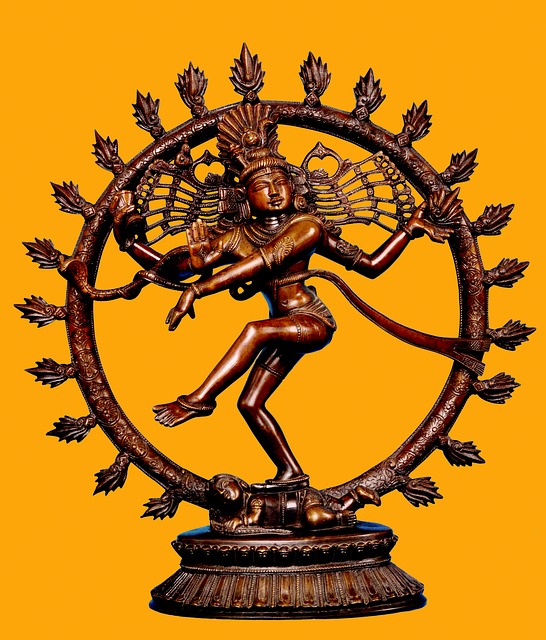
Nataraja is the form of Shiva that represents his cosmic dance of destruction and regeneration of the world. In Shiva temples, especially in Nataraja temples, early morning darshan of the Lord on the full moon day or Poornima of this month is very special. This Arudra Darshan attracts huge crowds of devotees to Shiva Temples on Paush Purnima or Dhanur Masa Purnima.
Pre-Dawn of the Celestials
Pausha month or Dhanurmasa is the Brahma Muhurta of the celestials. It comes in the hours just before dawn, when the Devas wake up and begin their day. So, this month is very special, as the night of the Devas draws to an end and a new day begins for them. Any pujas and rituals during this period provide quick benefits.
Sri Krishna’s Assertion
In the Bhagavad Gita, in the chapter where he provides examples of his manifest glories to Arjuna, Krishna mentions this month. He refers to it as Margashirsha Masam. He says that he is the Margashirsha month among all the 12 months. This is because of the pleasantly cool weather of this month, and also because it is the Brahma Muhurta of the Devas.

Festivals in This Month
There are numerous Paaush month festivals:
Paush Amavasya
Pushya Amavasya is the no -moon or new-moon day of the Pausha masa. This day is ideal for performing Shraddha for ancestors. Performing shradh and tarpan, and offering til and pinda to ancestors on this day is very beneficial. Doing this, in addition to donating clothes, feeding the poor; and undertaking charity works on this Amavasya provides relief from Shani Dosha and Pitra Dosha.
Paush month has another name – Sowbhagya Lakshmi Masa. Worshipping Mahalakshmi during this month provides immense benefits. Devotes do Sowbhagya Lakshmi Puja on Amavasya, fast through the day, and break their fast after performing an evening puja to Sowbhagya Lakshmi. This invites the blessings of ancestors as well as Sri Mahalakshmi.
Since Paush month leads on to the harvest season, Hindus also worship two more aspects of Mahalakshmi during this period. These are Dhanalakshmi (Goddess of Wealth), and Dhanya Lakshmi (Goddess of Crops/Food Grains).
Banada Ashtami
Pausha Navratri or Shakambari Navratri begins on this day, the eighth day of the waxing phase or Shukla paksha. This event celebrates Devi Shakambari, an incarnation of Devi Bhagwati.
Shakambari Purnima or Pausha Purnima
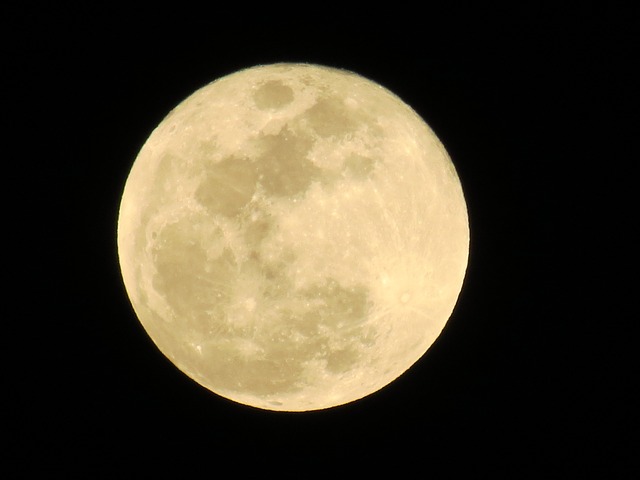
Paush Purnima or the full moon day of the Paush month is very auspicious. It marks the beginning of the Magha month austerities. Devotees bathe in rivers. A bath at the Triveni Sangam in Prayag, or in Varanasi Dashashwamedh Ghat on Pausha Purnima assures Moksha.
Pausha Purnima marks the end of the Shakambari Navratri. So, devotees celebrate this day as Shakambari Purnima or Shakambari Jayanti. Shakambari means one who wears or bears vegetables/greens. Devi Shakambari is the deity of fruits, vegetables, and greens. She manifested herself on this day to end a disastrous famine. Shakambari Devi is worshipped across India, in Karnataka she is known as Banashankari Devi.
Special Ekadashis
The two Pausha Ekadashis are very special:
- Sapahala Ekadashi
Saphala Ekadashi or Pushya Krishna Paksha Ekadashi is the eleventh day of the Krishna Paksha or the waning phase of the moon. All Ekadasis are days to worship Lord Vishnu. Saphala is a Sanskrit word that means success, fruitful. So observing a fast on this day and doing puja to Mahavishnu with flowers and Tulasi leaves bestows wealth, prosperity, and success. This Ekadashi is described in the Brahmanda Purana
- Putrada Ekadashi or Vaikunta Ekadashi
Pausha Shukla Ekadashi is the eleventh day or Ekadasi of Shukla Paksha – the waxing phase of the moon in Paush month.
Significance of Pausha Putrada Ekadashi
In the North, this is celebrated as Putrada Ekadashi. Putrada means granting sons. There are two Putrada Ekadashis, one in the month of Shravana, and one in the Paush month. North Indians observe this Shukla Ekadashi as Puasha Putrada Ekadashi and pray for a son.
Story of Pausha Putrada Ekadashi
Bhavishya Purana tells the origin of this vrat.
King Suketuman and Queen Shaibya of Bhadravati don’t have a child. On the advice of the Visvedevas, the couple observes the Putrada Ekadashi fast. They are soon blessed with a son. So, couples fast on this day and pray to Lord Mahavishnu to grant them a good son.
Significance of Vaikunta Ekadashi
In the South, Pausha Shukla Ekadashi is observed as Vaikunta Ekadashi, the most auspicious of all the 24 Ekadashis. For Sri Vaishnavas, this day commemorates the liberation or Moksha of Poet Saint Nammalwar. On this Ekadasi, devotees believe the gates of Vaikunta, the Abode of Lord Vishnu, stays open all day, to welcome liberated souls. Hence, those who seek Moksha observe a strict fast on this day, stay awake through the night and break their fast or do Parana on the next day, Dwadashi. Temples in South India hold special pujas. Symbolic Vaikunta gates are thrown open, the temple idols go through the opening, followed by huge crowds of devotees seeking to enter Vaikunta.
The Vishnu Purana states that fasting on Vaikunta Ekadasi equals fasting on all the other 23 Ekadashis.
Paush month is a very special month in the Hindu Lunisolar calendar. It is given over to religious ceremonies and spiritual pursuits, as it marks the pre-dawn of the celestials, the beginning of a new day for them. Beside the Paush month festivals and special days mentioned above, Makar Sankranti also occasionally comes during this month.





